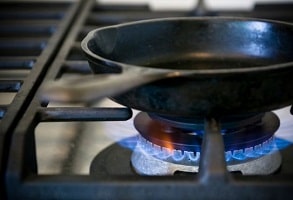Examples of Coulomb’s Law
We explain that what are examples of Coulomb’s Law? In 1785, Coulomb established the fundamental law of the electric force between two stationary charged particles. Experiments show that the electric force has the following properties:
1.- The Force is proportional to the product of the charges q 1 and q 2 of the two particles.
2.- The Force is of Attraction if the charges are of opposite signs and of Repulsion if the charges are of the same sign.
3.- The Force between the charges decreases if the distance between them increases . It is inversely proportional to the square of this distance: r 2
From these observations we can express the electric force between the two charges as:
F = (kq 1 q 2 ) / r 2
Where k is a constant known as Coulomb’s constant . In his experiments, Coulomb was able to show that the exponent of “r” was 2, with only a small percentage of uncertainty.
The constant k has a value that depends on the choice of units. The unit of charge in the International System of Units is the Coulomb (C). The Coulomb is defined in terms of the unit of current called Ampere (A), where the current is equal to the speed of the flow of charge.
When the current in a wire is 1 A, the amount of charge that flows at a certain point on the wire in 1 s is 1 C. The Coulomb constant k in the International System of Units (SI) has a value of:
k = 8.9875 * 10 9 Nm 2 / C 2
To simplify calculations, the approximate value is used:
k = 9 * 10 9 Nm 2 / C 2
The constant k can also be written
k = 1 / 4πε 0
where the constant ε 0 is known as the permittivity of free space and has a value of:
ε 0 = 8.8542 * 10 -12 C 2 / Nm 2
The smallest unit of charge known to nature is that of an electron or proton. The charge on an electron or proton has a magnitude of:
e = 1.60219 * 10 -19 C
Therefore, 1 C of charge is equal to the charge of 6.3 * 10 18 electrons. You can compare this with the number of free electrons found in 1 cm 3 of copper, which is of the order of 10 23 .
1 Coulomb is a significant amount of Charge. In typical electrostatic experiments, in which a rubber or glass rod is charged by rubbing, the net charge obtained is of the order of 10 -6 .
In other words, only a small fraction of the total available charge is transferred between the material of the bar and the material with which it is rubbed.
When applying Coulomb’s Law, it must be remembered that force is a vector quantity and must be treated as such. Furthermore, it is observed that Coulomb’s law only applies to point charges or particles .
There is no unit of charge smaller than that which has been detected as free charge; however, some recent theories have proposed the existence of particles called quarks that have charges between 1/3 and 2/3 that of the electron.
Even though there is experimental evidence that such particles belong to nuclear matter, a free quark has never been detected.
Examples of Coulomb’s Law
1.- There are two point charges located on a line, where q 1 = 5 * 10 -6 C , q 2 = -2 * 10 -6 C and r = 0.1 m . Determine the resultant force between them.
F = (kq 1 q 2 ) / r 2
F =?
k = 9 * 10 9 Nm 2 / C 2
q 1 = 5 * 10 -6 C
q 2 = -2 * 10 -6 C
r = 0.1 m
F = (9 * 10 9 Nm 2 / C 2 ) (5 * 10 -6 C) (- 2 * 10 -6 C) / (0.1 m) 2
F = – 9 N
2.- There are two point charges located in a line, where q 1 = 4 * 10 -6 C , q 2 = -1 * 10 -6 C and r = 0.05 m . Determine the resultant force between them.
F = (kq 1 q 2 ) / r 2
F =?
k = 9 * 10 9 Nm 2 / C 2
q 1 = 4 * 10 -6 C
q 2 = -1 * 10 -6 C
r = 0.05 m
F = (9 * 10 9 Nm 2 / C 2 ) (4 * 10 -6 C) (- 1 * 10 -6 C) / (0.05 m) 2
F = -14.4 N
3.- There are two point charges located on a line, where q 1 = 3 * 10 -6 C , q 2 = 5 * 10 -6 C and r = 0.15 m . Determine the resultant force between them.
F = (kq 1 q 2 ) / r 2
F =?
k = 9 * 10 9 Nm 2 / C 2
q 1 = 3 * 10 -6 C
q 2 = 5 * 10 -6 C
r = 0.15 m
F = (9 * 10 9 Nm 2 / C 2 ) (3 * 10 -6 C) (5 * 10 -6 C) / (0.15 m) 2
F = 6 N
4.- There are two point charges located on a line, where q 1 = 2 * 10 -6 C , q 2 = 2 * 10 -6 C and r = 0.08 m . Determine the resultant force between them.
F = (kq 1 q 2 ) / r 2
F =?
k = 9 * 10 9 Nm 2 / C 2
q 1 = 2 * 10 -6 C
q 2 = 2 * 10 -6 C
r = 0.08 m
F = (9 * 10 9 Nm 2 / C 2 ) (2 * 10 -6 C) (2 * 10 -6 C) / (0.08 m) 2
F = 5.625 N
5.- There are two point charges located on a line, where q 1 = 10 * 10 -6 C , q 2 = 6 * 10 -6 C and r = 0.2 m . Determine the resultant force between them.
F = (kq 1 q 2 ) / r 2
F =?
k = 9 * 10 9 Nm 2 / C 2
q 1 = 10 * 10 -6 C
q 2 = 6 * 10 -6 C
r = 0.2 m
F = (9 * 10 9 Nm 2 / C 2 ) (10 * 10 -6 C) (6 * 10 -6 C) / (0.2 m) 2
F = 13.5 N
6.- There are two point charges located on a line, where q 1 = 13 * 10 -6 C , q 2 = 3 * 10 -6 C and r = 0.12 m . Determine the resultant force between them.
F = (kq 1 q 2 ) / r 2
F =?
k = 9 * 10 9 Nm 2 / C 2
q 1 = 13 * 10 -6 C
q 2 = 3 * 10 -6 C
r = 0.12 m
F = (9 * 10 9 Nm 2 / C 2 ) (13 * 10 -6 C) (3 * 10 -6 C) / (0.12 m) 2
F = 24.375 N
7.- There are two point charges located on a line, where q 1 = 1 * 10 -6 C , q 2 = 1.5 * 10 -6 C and r = 0.11 m . Determine the resultant force between them.
F = (kq 1 q 2 ) / r 2
F =?
k = 9 * 10 9 Nm 2 / C 2
q 1 = 1 * 10 -6 C
q 2 = 1.5 * 10 -6 C
r = 0.11 m
F = (9 * 10 9 Nm 2 / C 2 ) (1 * 10 -6 C) (1.5 * 10 -6 C) / (0.11 m) 2
F = 11,157 N
8.- There are two point charges located on a line, where q 1 = 7 * 10 -6 C , q 2 = 8 * 10 -6 C and r = 0.22 m . Determine the resultant force between them.
F = (kq 1 q 2 ) / r 2
F =?
k = 9 * 10 9 Nm 2 / C 2
q 1 = 7 * 10 -6 C
q 2 = 8 * 10 -6 C
r = 0.22 m
F = (9 * 10 9 Nm 2 / C 2 ) (7 * 10 -6 C) (8 * 10 -6 C) / (0.22 m) 2
F = 10.41 N
9.- There are two point charges located on a line, where q 1 = 11 * 10 -6 C , q 2 = 9 * 10 -6 C and r = 0.3 m . Determine the resultant force between them.
F = (kq 1 q 2 ) / r 2
F =?
k = 9 * 10 9 Nm 2 / C 2
q 1 = 11 * 10 -6 C
q 2 = 9 * 10 -6 C
r = 0.3 m
F = (9 * 10 9 Nm 2 / C 2 ) (11 * 10 -6 C) (9 * 10 -6 C) / (0.3 m) 2
F = 9.9 N
10.- There are two point charges located on a line, where q 1 = 16 * 10 -6 C , q 2 = 20 * 10 -6 C and r = 0.24 m . Determine the resultant force between them.
F = (kq 1 q 2 ) / r 2
F =?
k = 9 * 10 9 Nm 2 / C 2
q 1 = 16 * 10 -6 C
q 2 = 20 * 10 -6 C
r = 0.24 m
F = (9 * 10 9 Nm 2 / C 2 ) (16 * 10 -6 C) (20 * 10 -6 C) / (0.24 m) 2
F = 50 N

